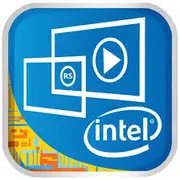Intel Core m5-6Y54

インテル コア m5-6Y54: 古いが依然として超ポータブル向けに有効
2025年における薄型ノートパソコン用プロセッサの分析
アーキテクチャと製造プロセス: 14nmでのSkylakeの効率性
2015年に発売されたインテル コア m5-6Y54プロセッサは、Skylakeマイクロアーキテクチャに基づいており、14nmプロセスで製造されています。これはハイパースレッディング(4スレッド)をサポートするデュアルコアチップで、基本周波数は1.1GHz、ターボモードでは最大2.7GHzに達します。統合型グラフィックスのインテル HD グラフィックス 515(24 EU、300–900 MHz)は、基本的なマルチメディアサポートを提供します。
アーキテクチャの特徴:
- エネルギー効率: Skylakeは電源管理を最適化しており、これはウルトラブックにとって重要です。
- インテル スピードシフト: この技術はプロセッサの状態遷移を迅速化し、レイテンシを低下させます。
- DDR3L/LPDDR3のサポート: 最大RAM容量は16GBですが、ほとんどのデバイスで4–8GBが使用されています。
老朽化しているにもかかわらず、2025年にはこのチップが中古または低価格の薄型ノートパソコンに見られるでしょう。現代の類似品(例えばインテル コア ウルトラUシリーズやApple M3)はすべての性能でこのプロセッサを上回りますが、m5-6Y54はインテルが超低TDPに賭けていた時代の象徴として残ります。
TDP 4.5W: パッシブ冷却用の熱設計電力
4.5WのTDPはコアm5-6Y54の重要な特徴です。これにより、Appleの12インチMacBook(2015–2017)やLenovo Yoga 730のようなファンレスノートパソコンを製造することが可能になりました。
利点:
- 無音。
- ミニマリストデザイン(筐体の厚さは最大13mm)。
- 低温。
欠点:
- 負荷時のパフォーマンスの制限。
- ターボモードは短時間(通常10-15秒)で機能し、その後過熱のため周波数が低下します。
パフォーマンス: 2025年の控えめな結果
Geekbench 6(2025年)のデータによると:
- シングルコア: 713
- マルチコア: 1351
実際のタスク:
- オフィス作業: Chromeで10以上のタブを開く、Word、Zoom—遅延が発生する可能性があります。
- マルチメディア: 4K動画の再生(ハードウェアアクセラレーション付き)は可能ですが、DaVinci Resolveでのレンダリングは受け入れられません。
- ゲーム: 古いゲームは低い設定でのみプレイ可能(例: CS:GO—720pで20–25 FPS)。
ターボブーストモード: 周波数を2.7GHzに上げますが、パッシブ冷却のため、短時間のタスク(ウェブページの読み込み、アプリの起動)でのみ効果的です。
使用シナリオ: 2025年にコアm5-6Y54が必要な人は誰か?
1. セカンドノートパソコン: 旅行や予備デバイスとして、$150–$250の中古デバイスを購入。
2. 基本的なタスク: ウェブサーフィン、文書作成、オンラインコース。
3. Linux愛好者: 軽量ディストリビューション(Lubuntu、Xubuntu)が古い機器を活性化します。
不向きな用途:
- 現代のゲームやビデオ編集。
- ニューラルネットワークモデルの起動(例: Stable Diffusion)。
バッテリー寿命: 2025年に10時間可能か?
コアm5-6Y54搭載ノートパソコンは30–40Whのバッテリーを備えていました。2025年にはその容量が60–70%に減少する可能性がありますが、バッテリー交換によって:
- 150ニットの明るさでGoogle Docs使用時に8–10時間。
- YouTube視聴時に5–6時間。
省エネ技術:
- Cステート: 使用していないコアをスリープモードに切り替えます。
- パネルセルフリフレッシュ: ディスプレイの消費電力を削減します。
競合との比較: AppleやAMDとの対比
インテル コア m5-6Y54 (2015):
- TDP: 4.5W
- Geekbench 6 シングル: 713
- グラフィックス: HD 515
Apple M1 (2020):
- TDP: 10W
- Geekbench 6 シングル: 2300
- グラフィックス: Apple M1 7-core GPU
AMD Ryzen 3 7320U (2022):
- TDP: 15W
- Geekbench 6 シングル: 1450
- グラフィックス: Radeon 610M
結論:
- Apple M1はm5-6Y54の3倍のパフォーマンスを持ち、そのTDPは2倍です。
- Ryzen 3 7320U(Zen 2)は2025年の予算型ノートパソコンで重要であり、4コア/8スレッドを提供します。
長所と短所: 購入するべきかどうか?
強み:
- 超ポータブル。
- 無音。
- 中古市場での低価格。
弱み:
- 古いパフォーマンス。
- 現代のOS(例: Windows 12は最低4コアを要求)に対するサポートが限られています。
- 弱いグラフィックス。
2025年のノートパソコン選びのおすすめ
コアm5-6Y54搭載デバイスを検討しているなら:
1. デバイスタイプ: SSD(最低256GB)および8GB RAMを搭載したウルトラブック。
2. ディスプレイ: 1920×1080解像度のIPSパネル。
3. 価格: 良好な状態の中古で$250以内。
アドバイス: $100–200を追加して、Ryzen 3 7320Uまたはインテル コア i3-N305搭載のノートパソコンを選ぶほうがいいでしょう。これらは現代のアプリケーションをサポートし、長持ちします。
最終結論: このプロセッサは誰のためのものか?
2025年におけるコアm5-6Y54は以下のような選択肢です:
- ミニマリスト: テキストやインターネット用の安価で軽量なノートパソコンを必要とする人。
- 旅行者: コンパクトさのために制限を受け入れることができる人。
- 愛好者: 古いデバイスをLinuxプロジェクト用に再利用する人。
主な利点: 価格とポータビリティのバランス。しかし、ほとんどのユーザーにとって、インテル、AMD、またはAppleの現代の予算チップの方がより合理的な投資となるでしょう。
基本
CPUの仕様
メモリ仕様
GPUの仕様
その他
ベンチマーク
他のCPUとの比較
ソーシャルメディアで共有する
または当サイトへのリンクを追加
<a href="https://cputronic.com/ja/cpu/intel-core-m5-6y54" target="_blank">Intel Core m5-6Y54</a>